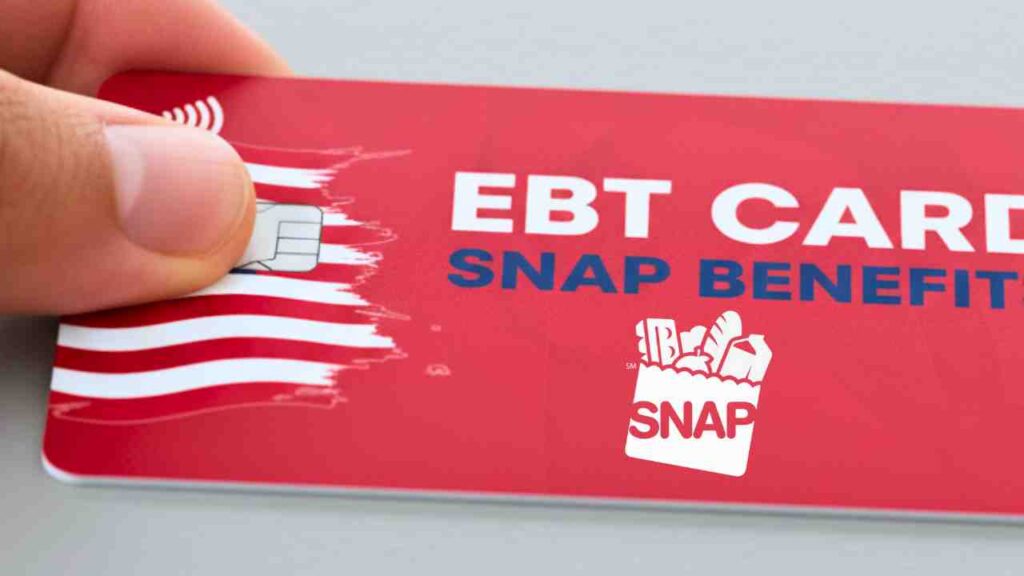As the clock ticks toward November 1st, a shadow of uncertainty hangs over millions of American households. The partial federal government shutdown, which began on October 1, is poised to trigger a massive disruption in Supplemental Nutrition Assistance Program (SNAP) benefits, commonly known as food stamps.
With federal funds blockaded and the Trump administration reluctant to activate emergency reserves, at least 36 states have warned of suspensions or delays in November payments, leaving some 42 million beneficiaries in suspense: low-income families, veterans, seniors, and children who depend on these $9 billion monthly SNAP benefits to put food on the table.
SNAP benefits could not arrive in November
The U.S. Department of Agriculture (USDA) has confirmed that without Congress releasing funds, states will not be able to distribute the benefits scheduled for next month. “This is not just a bureaucratic technicality; it’s a potential humanitarian crisis,” New York Governor Kathy Hochul declared at a press conference on Wednesday.
“We’re talking about people who are already struggling to make ends meet, and now we’re taking away the lifeline that allows them to feed themselves.” Hochul, along with other Democratic leaders, has joined forces to sue the federal government for not using the available $5 to $6 billion contingency fund, arguing that the current shutdown qualifies as a “national emergency” under USDA regulations.
SNAP Shutdown Nightmare: States not sending food stamps in November
Fortunately, October payments will not be affected. Federal funds had already been transferred to states before October 1, allowing beneficiaries to receive their EBT (Electronic Benefit Transfer) cards normally. However, November looks different. SNAP, which represents 80% of federal nutrition funds in the U.S., operates under a model where states act as distributors, but without USDA approval, state coffers cannot intervene in a sustained manner. “It’s as if the federal government has tied our hands,” lamented an official from the California Department of Human Services, one of the hardest-hit states, where more than 5 million people depend on the program.
The states’ responses vary, revealing a patchwork of desperation and limited creativity. At least 25 states (possibly increasing to 36) have issued official warnings about suspensions or delays, urging residents to ration their supplies and seek local alternatives. Here’s a list of the states most vocal in announcing disruptions:
- Alaska
- Arkansas
- California
- Colorado
- Connecticut
- Delaware
- Florida
- Georgia
- Indiana
- Maryland
- Mississippi
- Missouri
- New Jersey
- New York
- Pennsylvania
- Texas
- Virginia (partially)
- Wisconsin
In California, for example, Governor Gavin Newsom has declared a food emergency and distributed guidelines for purchasing non-perishable items in advance, while in Texas, Governor Greg Abbott’s office has coordinated with food banks to triple their capacity. “We can’t wait indefinitely for Washington; people need solutions now,” Abbott said in a tweet on October 23.
US states using their own funds to send SNAP benefits
On the other hand, a handful of states have opted to inject their own funds to mitigate the impact, although these measures are temporary stopgaps without federal reimbursement. Only two have confirmed concrete actions to date:
- Hawaii: Using emergency reserves, the state plans to cover temporary benefits for approximately 200,000 recipients during the first two weeks of November, Governor Josh Green announced. “It’s a cost we’ll pay from our local taxes, but I won’t let our families go hungry,” Green emphasized.
- Virginia: With limited state funding, Governor Glenn Youngkin has prioritized vulnerable beneficiaries like children and the elderly, covering approximately 20% of cases. “This is the least we can do while Congress sorts out its mess,” he said in an official statement.
These efforts, however, are drops in the bucket. Hawaii and Virginia represent less than 5% of national recipients, and their reserves will be quickly depleted if the shutdown extends beyond November. Nonprofits like Feeding America have reported a 30% increase in calls to their helplines since the start of the shutdown, with volunteers working double shifts to distribute emergency rations.
